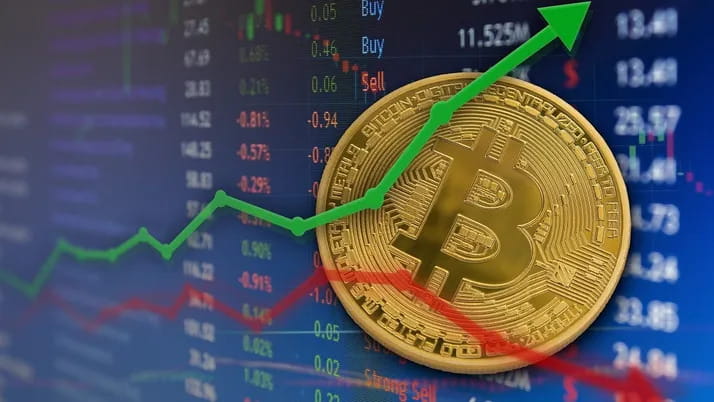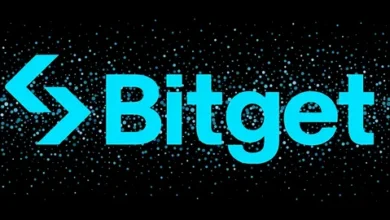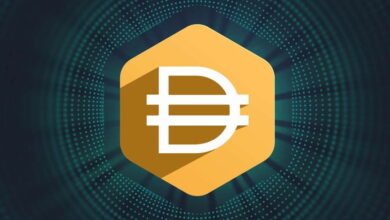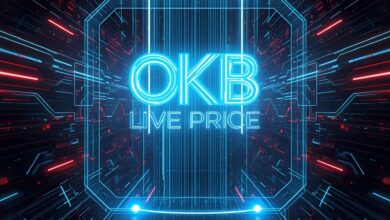
Bitcoin Cash Forecast 2025 Will BCH Top $1,200
Bitcoin Cash (BCH) has re-emerged as one of 2025’s more intriguing large-cap crypto assets. After the 2024 BCH halving reduced new issuance to 3.125 BCH per block and a planned May 2025 network upgrade reinforced smart-contract capabilities, the narrative shifted from “legacy fork” to “lean payments chain with tokenization.” As of late September 2025, spot prices commonly referenced for BCH hovered in the mid-$500s—with live trackers and publisher dashboards showing ~$540–$580 and a market cap near $11 billion, depending on the source and time of day.
The big investor question is whether a return to four-figure territory is feasible and, specifically, if a Bitcoin Cash forecast for 2025 that pierces $1,200 is realistic. To answer it, we’ll examine catalysts (macro and chain-specific), on-chain health, competition, technical structure, and plausible scenarios—bull, base, and bear—grounded in public data and documented upgrades.
Where BCH Stands Entering Q4 2025
BCH remains a top-30 crypto by market value with active listings across deep, regulated venues. While live data services differ slightly in methodology, multiple trackers through late September placed Bitcoin Cash’s price around the mid-$500s and market cap around $10–$12B.
On the macro side, crypto is recovering from a volatile September and early-October backdrop where Bitcoin itself rebounded above ~$114,000, a move that historically improves liquidity and sentiment down the cap curve. Stronger BTC seasons have a habit of “lifting all boats,” though with lags and dispersion.
From a fundamentals perspective, Bitcoin Cash was born to scale payments: it raised Bitcoin’s 1 MB base block size to 8 MB and then to 32 MB, keeping fees low and throughput high relative to BTC. Reference guides and exchange academies still frame BCH as the “bigger-block” alternative designed for faster, cheaper transactions—context that matters when retail demand returns.
The 2024 Halving and the 2025 Network Upgrade

Why the 2024 halving matters in 2025
BCH’s issuance schedule mirrors Bitcoin’s four-year rhythm. The most recent Bitcoin Cash halving occurred in early April 2024, cutting block rewards from 6.25 to 3.125 BCH. That change creates incremental supply scarcity and can support price over a multi-quarter horizon—especially if demand strengthens alongside broader market risk appetite.
May 15, 2025 Upgrade: Building blocks for utility
On May 15, 2025, the network activated an upgrade featuring targeted VM limits and a BigInt (high-precision arithmetic) capability—incremental but important plumbing for complex smart-contract and token operations on BCH. These changes build atop CashTokens (enabled in May 2023), which introduced fungible and NFT-style tokens and app-level primitives natively on Bitcoin Cash. Together, they expand utility beyond payments without sacrificing low fees.
Hashrate, Security, and Fees
Hashrate is a rough proxy for economic security in proof-of-work networks. Through late Q3 2025, BCH hashrate has hovered around ~5 exahash/second on several aggregators—higher than post-2024 halving troughs and consistent with miners’ willingness to point rigs at the chain at prevailing prices and difficulty. More security and stable difficulty reduce tail-risk for long-term holders.
Meanwhile, fees on Bitcoin Cash remain comparatively low thanks to generous block space (32 MB baseline), a long-standing design decision that keeps everyday transactions cheap—still BCH’s core differentiator versus BTC. Educational and reference sources consistently cite this technical posture.
Competitive Positioning: Payments First, With Tokenization
Bitcoin Cash’s unique selling proposition is clear: fast settlement and low fees for peer-to-peer transactions. That positioning benefits from macro periods where BTC appreciation attracts new users to the broader crypto stack; some of those users seek low-friction spending and remittance rails, which BCH is built to provide. Reference hubs and overviews continue to describe BCH as “peer-to-peer electronic cash” with emphasis on speed and cost.
However, 2023–2025 also ushered in CashTokens, pushing BCH into tokenization and DeFi-adjacent use cases. Developer explainers and the project’s official resources highlight that CashTokens enable fungible tokens, NFTs, and dApps on BCH—maintaining BCH’s fee and UX advantage while broadening potential demand drivers. The 2025 BigInt addition further supports computational needs for more advanced contracts.
Macro Drivers for a 2025 Rally
Three macro variables matter most for a Bitcoin Cash price prediction for 2025:
-
Bitcoin cycle and ETF flows: BTC price and liquidity often set the tone. Coverage in 2025 notes seasonal strength and the market impact of U.S. ETF structures on capital inflows. A constructive BTC backdrop improves BCH’s odds of trending higher.
-
Risk appetite for large-cap alts: When Bitcoin consolidates, liquidity frequently rotates into high-beta large caps like BCH. Sentiment indicators and rotating narratives can lead to sharp repricings, especially if technical levels break.
-
Regulatory clarity and exchange depth: Distribution across regulated, liquid venues and clearer rules amplify participation from institutions and pros; these plumbing factors affect BCH just as they do other large caps.
Can BCH Clear $1,200
Pure price-based models vary widely. Some algorithmic forecasters have published optimistic top-of-range reads for late-2025—with a few even floating four-figure targets—but these should be read as scenario outputs, not certainties. Conversely, more conservative desks frame BCH ending 2025 below current levels—a reminder that volatility cuts both ways. Using these as sentiment signposts, not gospel, is prudent.
Price structure and liquidity
From the mid-$500s, $1,200 implies a bit more than a 2x from recent spot prints. Achieving that in 2025 likely requires:
-
A decisive BTC up-leg (seasonal tailwinds and ETF-driven inflows) to draw fresh capital into crypto beta; recent reporting suggests the environment is at least improving into October.
-
Clear breakouts above prior BCH local highs, with follow-through volume on major exchanges to reduce slippage and volatility traps.
Narrative reinforcement
-
Utility proof points on BCH post-upgrade (e.g., visible CashTokens activity, merchant integrations, or successful dApps) to validate a “payments + tokenization” thesis.
-
Continued hashrate stability—or growth—to reassure long-term holders and reduce perceived consensus risk.
Supply dynamics
-
The 2024 halving already cut structural sell pressure from miners. If demand increases while issuance remains lower, the supply-demand balance tilts in favor of price—particularly during bull phases.
Scenarios for 2025
Bull Case: $1,200–$1,500 test
Macro risk leads: Bitcoin extends its bull market into year-end, bringing fresh inflows and improving exchange depth for large-cap alts. BCH benefits disproportionately because of its payments narrative, CashTokens traction, and an active developer base leveraging 2025 upgrade features (VM limits, BigInt). Hashrate remains firm (~5 EH/s neighborhood), reinforcing confidence. In this setup, four-figure prints are plausible, and a $1,200 tag becomes a reasonable stretch target for late-cycle rallies.
Base Case: $650–$950 range
BTC grinds higher but with choppiness; rotation into alts is selective. BCH posts higher highs but stalls under four figures without a blockbuster catalyst from CashTokens or a surge in merchant activity. Algorithmic forecasters’ moderate targets in the $600s–$900s align with this kind of mid-cycle drift.
Bear Case: $350–$550 consolidation
Macro shocks or a prolonged BTC drawdown sap liquidity. BCH underperforms as traders rotate back into BTC or stables. Low-fee utility remains, but tokenization traction is slower than hoped, and price compresses into a wide, range-bound channel.
Key Risks to Any Bitcoin Cash Forecast

Market concentration and beta: BCH remains highly correlated with BTC and broad crypto sentiment. If liquidity thins or risk appetite fades, BCH typically follows.
Adoption gap vs. competitors: Payments and tokenization have become ultra-competitive arenas. If rival ecosystems (L2s or alt-L1s) capture mindshare with incentives or UX, BCH’s relative bid could lag—regardless of low fees.
Security and hashrate dynamics: While ~5 EH/s is materially stronger than early cycles, hashrate fluctuations can occur; sustained declines would raise questions around miner incentives and chain security.
Regulatory headlines: Changes in exchange policies or regional rules can affect liquidity, accessibility, and price discovery for BCH—positively or negatively.
What Would Convince the Market BCH Deserves Four Figures Again
-
Observable utility growth: measurable CashTokens issuance, dApp activity, or merchant integrations that demonstrate demand for block space and sustained transactions on BCH.
-
Data-backed security: a stable-to-rising hashrate trend—or better miner economics despite the halving—keeps confidence high.
-
Macro tailwinds: a constructive Bitcoin regime—supported by ETF flows and seasonal strength—tends to unlock multiple expansion for high-beta large caps like BCH.
-
Liquidity breadth: deeper order books and healthy derivatives basis across top venues, signaling institutional comfort rather than purely retail squeeze dynamics.
Can BCH explode past $1,200 in 2025
Yes—under the right conditions. If Bitcoin sustains its Q4 bid, if BCH’s 2025 upgrade and CashTokens ecosystem produce visible usage, and if hashrate stays firm, a break above $1,200 is a credible bull-case outcome. The base case, however, is a constructive but more modest advance that tops out below four figures unless catalysts stack in quick succession. As with all crypto, position sizing and risk controls matter more than any single Bitcoin Cash forecast.
Also Read: Bitcoin Price After 10 Years Expert Predictions & Analysis 2025 2035 Crypto Forecast
Conclusion
Bitcoin Cash in 2025 is more than a 2017 fork story. It’s a low-fee payments chain that now supports native tokenization and smart-contract-style logic, with a 2025 upgrade tightening the under-the-hood math and VM constraints. Couple those fundamentals with a friendlier macro backdrop for crypto and BCH’s liquidity footprint, and you have a reasonable path to four-figure prices—if the right catalysts align. Without them, a steady, grinding advance is still plausible, supported by post-halving supply dynamics and BCH’s enduring utility.
FAQs
Q: What is driving the 2025 Bitcoin Cash outlook the most?
Macro flows from Bitcoin and ETF-related liquidity are the primary drivers. When BTC rallies and liquidity broadens, BCH typically benefits, especially given its low-fee, high-throughput design and improving tokenization stack.
Q: Did the 2024 BCH halving really matter for price?
Halvings reduce structural sell pressure by cutting miner rewards (now 3.125 BCH per block). The effect is rarely instantaneous but often supports price over subsequent quarters, particularly if demand rises.
Q: What changed in the May 15, 2025 upgrade?
BCH activated targeted VM limits and BigInt (high-precision arithmetic), incremental improvements that help developers build more sophisticated apps—complementing 2023’s CashTokens.
Q: How healthy is BCH security now?
Aggregators have tracked ~5 EH/s average hashrate in recent months—materially above early-cycle levels and a constructive sign for network security, though hashrate can fluctuate with price and mining economics.
Q: What price targets are others publishing for 2025?
Automated models vary widely—from modest $600s–$900s baselines to optimistic four-figure scenarios. Treat them as scenarios, not guarantees, and build your own thesis from fundamentals, technicals, and risk tolerance.







